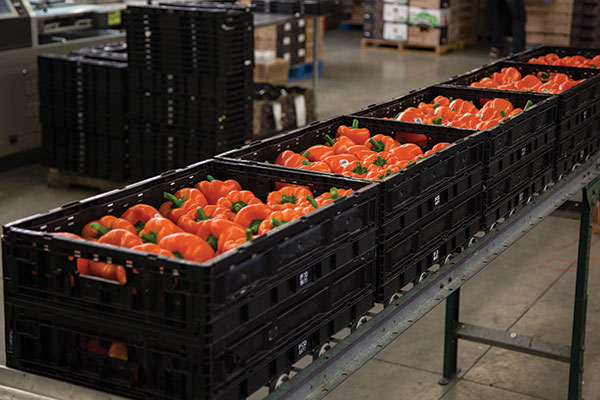The power of reusable packaging
In a recent report, IFCO has put some numbers to what can be accomplished with reusable totes and related containers.
It all started with the first Earth Day. At least that’s where I personally think the environmental movement really made its first, very public mark.
Maybe you remember that day in 1970, maybe not. I was a high school junior back then, and I remember the emphasis on planting more trees and recycling cans and bottles. The spirit of Earth Day has grown enormously and morphed quite considerably.
Now we tend to talk about climate change and sustainability. And while most of us have some knowledge in this area, we can be bit shallow on the subject. Yes, I’ll raise my hand first. I get it, but don’t press me for too many details.
But that’s not the case for IFCO, the world’s leading provider of reusable packaging containers (RPCs) for fresh food. The company recently released its comprehensive ESG (Environment Social Governance) 2025 strategy. This is way beyond cans, bottles and more trees. Quite simply, the company says its purpose is “making the fresh grocery supply chain sustainable.” And yes, RPCs figure prominently—as they should.
Early in the report, there’s a summary of what IFCO’s interest in the circular economy accomplished in 2021. “Together with our customers in FY21, we have saved 566K tonnes of Co2, 288k tonnes of solid waste, 10 m m3 of water, 36k TJ of energy and 51k tonnes of product damage.” No matter what unit of measure you prefer, that’s an impressive list of savings. You can find the full report “IFCO sustainability: Thriving in the circular economy” at ifco.com/about-ifco/sustainability.
If you’re not versed in the circular economy, here’s what the U.S. Environmental Protection Agency has to say about it. The circular economy is a systems-focused approach that makes industrial processes restorative and regenerative by design that aims to eliminate waste through the superior design of materials, products and systems including business models. Yes, that’s a greatly edited version of the EPA’s explanation. In any regard, it sounds exactly what IFCO is doing.
To generate such impressive savings, IFCO needs to have a substantial base, and it does. The company has more than 325 million RPCs in circulation. They are used to making 1.9 billion shipments of food annually between more than 15,000 growers/producers and the 300 plus retailers who sell the goods. IFCO says it has the world’s largest network of players in the fresh grocery supply chain.
It’s clear reading through the report that what has already been accomplished is closer to a down payment. Recurring words about the future include double, implement, expand, 100% renewable, and best-in-class, to mention just a few.
Hundreds of millions of totes and containers are central to IFCO’s success, not to mention their business model. Compared to single-use packaging, these totes save enough energy in a year to equal the annual energy consumption of 2.5 million households. And trimming food waste is the equivalent of more than 85 million meals.
That’s all good and a long way from the first Earth Day. But it’s also an important step to what sustainable packaging can do for sustainability going forward.













